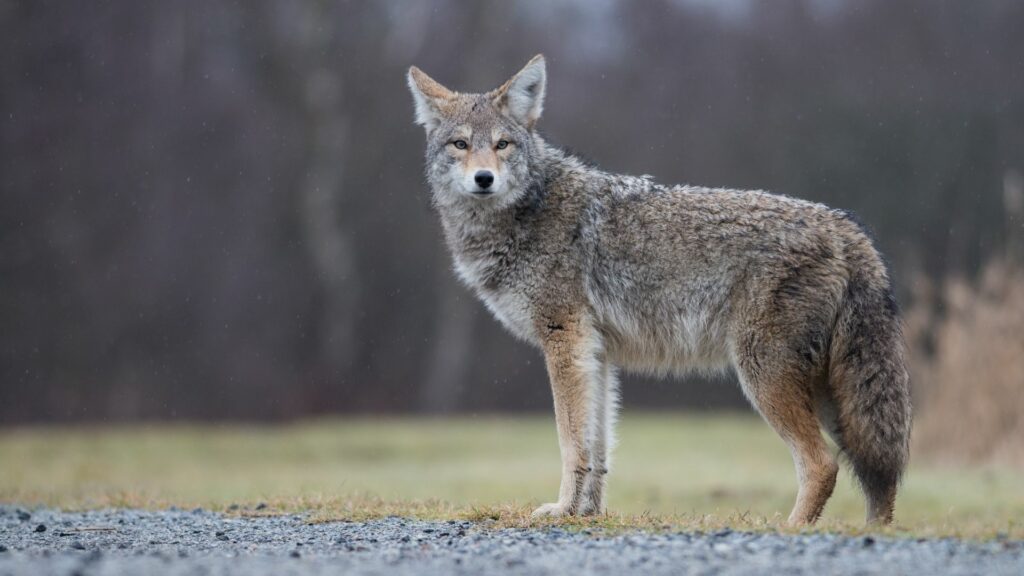The pointy ears; the furry tail; the pack-mentality. If you live in a fairly rural area, or frequent trips to your local hiking trail, chances are you’ve spotted a coyote lurking nearby. And despite the many traits they share with their domestic counterparts, coyotes can pose a major threat to your pup.
To learn why coyotes attack, and how to protect your pooch from becoming their prey, keep reading.
Why are Coyotes a Threat to Dogs?
Have you ever noticed that the news of coyote sightings and attacks seem to pop up more around spring and summertime? That’s because February is mating season for coyotes, so come late spring/early summer, new coyote pups are being born. This means coyotes will not only be more active in their hunting to ensure their new babies are well-fed, but will also become even more defensive to protect their young. Anyone that enters their territory is seen either as food or a threat, provoking more attacks than other “quieter” times of the year.
However, just because attacks may be more likely in the warmer months, doesn’t mean you can let your guard down come winter time. When it comes to food, winter brings scarcity in the wild, so coyotes grow desperate and often move into residential neighborhoods looking for food. Since their diets consist mainly of small rodents – rabbits, squirrels, birds – coyotes often attack small dogs and cats, given the similarities.
But attacks aren’t the only thing pet parents need to worry about if coming into contact with a coyote. Coyotes are wild animals, which means they’re a host to many pests and diseases – ticks and rabies, included. This means coming into contact with one can put your dog at risk of contracting those pests and diseases, leading to an expensive vet visit, at best.
What to do if your dog gets bit by a rabid animal
Preventative Ways to Protect Your Pup
While there’s not always a guarantee that you won’t come in contact with a coyote (they’re popular from the mountains and deserts, to the forests and plains), the odds of being able to protect your pup from a coyote increase with a few preventative measures:
- Keep your dog away from areas where coyote sightings have been reported
- Avoid off leash walks (especially if your dog is a wanderer), stick to streets or trails and open paths, and avoid areas with thick brush, which is where coyotes like to burrow
- Don’t walk during sunrise or sunset, when coyotes are known to be on the prowl
- Keep a flashlight or large object with you during walks – especially in areas where coyote sightings are more prevalent
… and if You Do Come into Contact With a Coyote
If you and your dog come in contact with a coyote, the key is to remain calm.
Pick up your dog and do your best to keep them from barking (and drawing more attention to you). Try and make yourself appear as big as possible by raising your arms up (and waving your flashlight around if you have one) and yell. If you make yourself appear as a serious threat, the coyote will usually get scared and avoid an attack. Slowly back away and leave their territory as quickly and calmly as you can – but do not run, as this can actually provoke a coyote to attack.
When safe, call your local animal control to report the sighting, then hug your pup and give them a treat (and grab one for yourself, too!).



Carry a waking cane to defend yourself and your dog. A hard hit will chase a coyote away.
Using a coyote vest not only helps against coyotes, but also other predators – they will intimidate they so they don’t want to mess with a pet who has it on, but if they are attacked, it will help to save the pet from serious injuries! Be proactive.
What about an umbrella? Opening one can scrare a large dog and offer some protection, maybe will work with a coyote.
All of these are terrific ideas.
Of course I don’t think anyone should try all of these at once! 😂
(Although it would terrify most dogs 🥴)